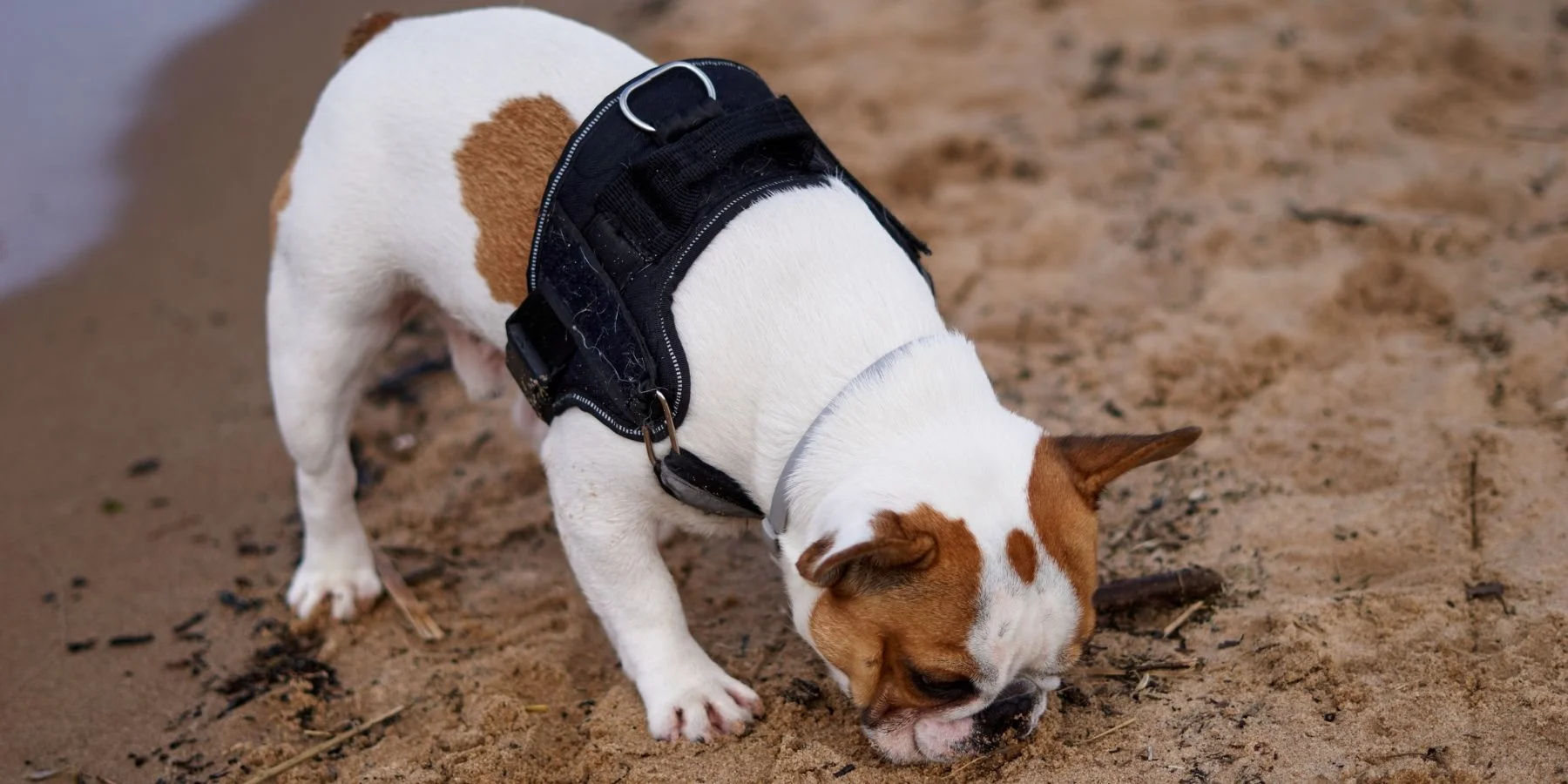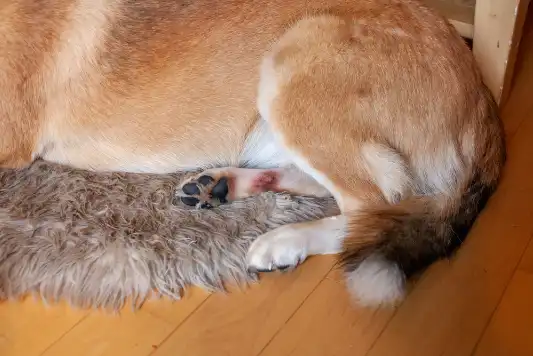PET HEALTH
Hot Spots on Dogs: What To Know & How To Treat
Sometimes called summer sores, hot spots are red, inflamed, and pus-filled wounds. Hot spots on dogs are very common and easy to treat; you can manage this condition by working with your veterinarian to care for your faithful pup’s skin.
Here’s what you need to know about hot spots and your dog.
What Is a Hot Spot on a Dog?
A hot spot is a painful and itchy skin infection that can appear spontaneously and spread quickly.¹ Dogs may get hot spots if they live in humid climates or during the summer months.
Also known as acute moist dermatitis, hot spots can start as a small irritation on a dog’s skin. Then the bacteria living on the skin may spread to create what is called a hot spot.
How To Treat Hot Spots on Dogs: Step by Step
The good news is that hot spots are easy to get under control. You should work with your veterinarian closely for treatment options, but you can typically expect hot spots to clear up in roughly 3 – 7 days after treatment.¹,²
1. Consult with your vet
Once you get your vet on the phone, describe what you’re seeing or send them pictures. They may ask you to come in for an exam, but it’s very likely they’ll prescribe something over the phone.
Your vet’s goal is to figure out what’s causing your pet to scratch.¹,² They’ll examine your dog for fleas and ticks or other skin issues. Then, you'll get prescriptions to combat the infection. This may include things like flea medication, steroids, or antibiotics.
2. Trim your dog’s fur
You (or your vet) might need to trim the fur around the infected area with dog-safe scissors to expose it to air so it can dry. Take your time while doing this to avoid nicking the open wound or yourself.
3. Clean the area
Use vet-approved antiseptic sprays — like chlorhexidine — to clean the area thoroughly to remove any pus, hair, or debris.¹,²
If you don’t have antiseptic sprays on hand, diluted hydrogen peroxide could work. As always, it’s recommended to check with your vet before administering potential remedies at home.
4. Apply an anti-inflammatory medication
You’ll likely be prescribed a topical antibiotic or steroid by your vet to apply to your dog after you’ve cleaned the infected area. It’s recommended to avoid using products with alcohol because it can burn the exposed tissue.¹,²
5. Prevent your dog from scratching
Lastly, the key to healing is preventing your dog from licking, chewing, or scratching the area. A cone or Elizabethan collar might be needed.¹,² If you don’t have a cone, ask your vet for one or buy one that fits your dog's body size.
You could also try a t-shirt, sock, or doggie onesie to cover the wound. If you choose to do this, make sure the wound is able to breathe and that the fabric stays dry. Whatever you can do to protect the wound, the better.
Hot Spots Making Your Dog Miserable?
What Causes Hot Spots on Dogs?
Hot spots start because of excessive itching, scratching, or licking that results in a sore on the skin. Some breeds of dogs, like Labrador retrievers, are prone to hot spots because their double coats trap dirt and debris. A pet parent’s poor grooming routines can also lead to hot spots forming.
There are dozens of things that may be causing the itching, but the most common causes of hot spots include:¹,²
- Environmental allergies (grass, dust, etc.)
- Anal gland inflammation
- Poor grooming habits
- Food allergies
- Fleas
- Insect bites
- Cuts or scrapes
- Separation anxiety
- Boredom
- Parasites
- Ear Infections
Make note of any changes in behavior along with any scrapes or marks on your dog's skin. Once the itch-scratch cycle starts, it’s difficult to get your pup to stop. Don’t ignore scratching or licking because once your dog bites and breaks the surface of the skin, it can create an environment for infection to spread.
Signs and Symptoms of Hot Spots
Hot spots can sneak up on pet parents because the spots look very similar to other skin conditions. The most common areas where hot spots form are the head, legs, and hips of your dog, but they can occur anywhere on the body.¹’²
Here are a few signs and symptoms that’ll help you figure out whether it is a hotspot or not:¹,²
- Compulsive licking and chewing
- Reddish-brown saliva staining around the hot spot site
- Swelling
- Raw-looking skin
- Oozing
- Foul smell
- Visible discomfort sitting on or touching the area
Preventing Hot Spots
Hot spots are easier to prevent than to cure. Teach your pet “leave it” to stop them from licking, if possible.
During the summer months, be sure to keep your pet clean by giving them regular baths with chlorhexidine shampoo and drying them properly. Keeping up with their grooming habits is the best way to break the lick-itch cycle before it starts.
Follow your vet’s advice and obey their instructions carefully, especially for prescription medications. Your vet may prescribe antihistamines to help battle your dog’s allergies. They might recommend using topical or oral steroids to help control the itching.
Also, take the time to discuss your dog’s lifestyle with your vet if you suspect boredom or separation anxiety is the cause of the licking. Consider dog coursing or enrolling in a training class together to help bond with your dog while keeping them active and engaged. It’ll give you an opportunity to spend time with your dog and keep them healthy for years to come.
MetLife Pet Can Help Take the Heat off Your Wallet
A hot spot on your dog’s skin can create tons of anxiety. Infection can spread quickly, causing your dog to spend more time licking themselves than playing with you. That trip to the vet to treat the wounds could lead to a massive bill to cover medications, labor, and lab fees. But pet parents with dog insurance know that up to 100% of their bill may be covered.
At MetLife Pet Insurance, winner of the “Pet Insurance of the Year” Award, we’re committed to helping you keep your pets happy and healthy, whether that means learning all there is to know about your pets or helping you protect them with an insurance policy. Get started today with a free quote.
Help Protect Your Pup From Pain



